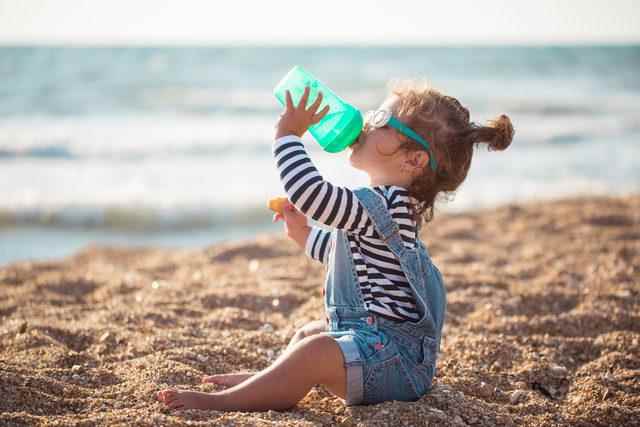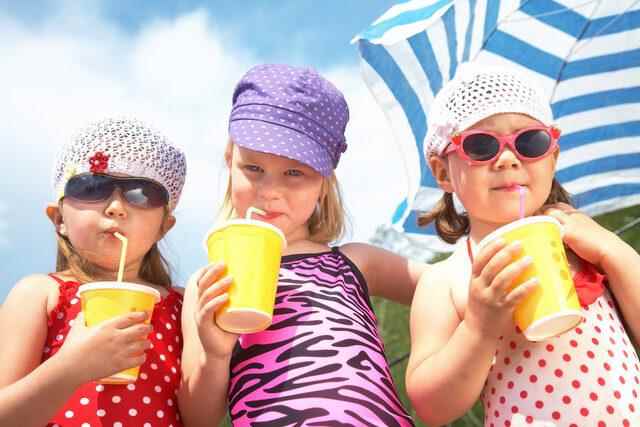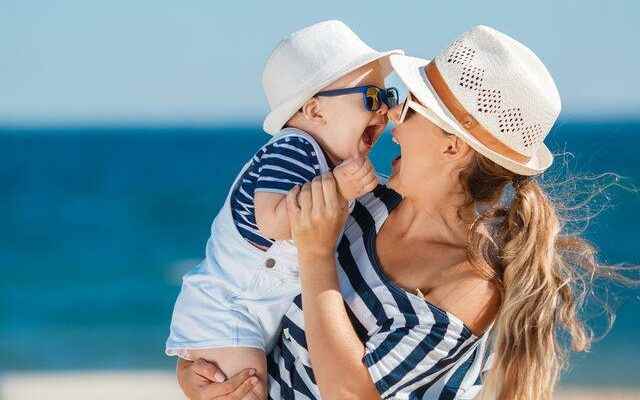Acıbadem University Atakent Hospital Pediatrics / Pediatric Intensive Care Specialist Assoc. Dr. Sare Güntülü Şık, stating that sunstroke is very common in children these days when the air temperatures are increasing day by day, said, “Therefore, it is absolutely necessary to avoid taking children out to the sun, especially between the hours of 11.00-15.00, when the sun’s rays are the steepest. Attention should be paid to food hygiene, the child should be provided with plenty of fluids and thin loose clothing should be preferred. says.
SUN STROKE
The state of fatigue and exhaustion caused by exposure to high temperatures for a long time is defined as sunstroke. In this table, the child; fever, weakness, pallor, headache, dizziness, drowsiness, vomiting and changes in consciousness can be seen. Assoc. Dr. Sare Güntülü Stylish, emphasizing that the child must be taken to a shaded and cool place in case of heat stroke, said, “Then you should take off your clothes and cool your body with a wet cloth. It is also very important to give water if he is conscious and able to drink. If you have a convulsion due to drowsiness, altered consciousness, or fever, you should take it to the nearest hospital immediately.
HOW PROTECTED?
- Make sure your child consumes plenty of fluids without waiting for thirst.
- Do not expose it to the sun between 11:00 and 15:00 when the sun is at its peak.
- Prefer thin, cotton and light-colored clothes, especially at noon when the sun is most effective.
- Always wear a hat to protect your head from the sun.
- Take frequent warm showers and avoid prolonged exposure to the sun.
SUNBURNS
Prolonged exposure to the sun can cause skin damage and burns. In mild burns (1st degree), redness, tenderness and pain develop on the skin. In this case, painkillers, moisturizers and plenty of fluid consumption are sufficient. In more severe burns, water vesicles, fever, nausea, vomiting and swelling in the burn area can be added to the table as a result of severe water collection. Assoc. Dr. Sare Güntülü Şık warns that in this case, it is necessary to apply to the nearest health institution, as electrolyte imbalance and convulsions may develop due to dehydration (fluid loss).

HOW PROTECTED?
- Keep out of the sun between 11:00 and 15:00 when the sun is at its peak.
- Choose sunscreens with a high protection factor (+50 factor).
- Apply sunscreen 20-30 minutes before going out in the sun and repeat this process every 2 hours.
- Wear a wide-brimmed hat and sunglasses to prevent the sun from harming the eyes.
FLY AND INSECT BITES
Although fly and insect bites cause complaints such as skin rash, itchy blisters and pain, the complaints usually pass in a short time. However, it can be more severe in allergic children. Especially bee stings can be life threatening by causing shock picture called anaphylaxis in allergic children. Stating that first aid treatment is usually sufficient for insect bites if there is no allergic reaction, Child Health and Diseases / Pediatric Intensive Care Specialist Assoc. Dr. Sare Güntülü Şık, “Wash the bitten area with soap and water against the risk of infection. Ice application will also reduce pain and itching. The first thing you should do in a bee sting is to remove the sting to prevent the venom from spreading. However, do not remove the sting by squeezing the skin, as more poison may spread throughout the body. In tick bites, it is very important to consult a doctor as soon as possible without any intervention.

HOW PROTECTED?
- Use net mosquito nets on doors and windows, mosquito nets on the bed and protective nets for strollers.
- Do not wear short-sleeved and short-legged clothing outdoors as flies and insects can enter your body.
- Avoid clothes with flowers and colors that resemble flowers, such as pink, yellow and red, which may attract bees.
- Apply natural ingredients to your skin.
- Do not use creams or colognes that may emit a floral scent.
FOOD POISONING
Food poisoning is a condition that occurs as a result of consumption of foods containing bacteria, viruses, toxins or chemicals and can cause serious health problems in children. Vomiting, diarrhea, nausea, abdominal pain, loss of appetite, fatigue and weakness may occur within 6-24 hours after food intake. While most of them recover spontaneously, in severe poisonings (especially accompanied by severe fluid loss-dehydration) it is necessary to apply to the nearest health institution.

HOW PROTECTED?
Avoid foods that have been left open.
Do not buy meat and meat products and milk and dairy products from untrusted places.
If you are going to eat out, choose places that comply with the hygiene rules.
Cook the easily perishable risky foods such as red meat, chicken, fish, milk and dairy products for the appropriate time and temperature, do not keep the cooked food at room temperature for more than 1 hour.
Do not consume poorly washed vegetables and fruits, unclean drinking water and unpasteurized milk and dairy products.
To thaw frozen foods, take them to the refrigerator the day before and thaw them at 0-4°C or in microwave ovens, and do not refreeze the thawed foods.
Do not reheat a food that you have warmed by removing it from the refrigerator and putting it back in the refrigerator.
SUMMER DIARS
Common summer diarrhea in children can be caused by swallowing unclean pool or sea water, consuming foods that are not cleaned or stored under appropriate conditions, foods washed with dirty water or dirty water, and foods that come into contact with flies or insects. Watery stools; It may be accompanied by nausea, vomiting, abdominal pain and weakness. Child Health and Diseases / Pediatric Intensive Care Specialist Assoc. Dr. Sare Güntülü Şık, warning that serious health problems may develop if fluid and mineral loss is not replaced in diarrhea as in poisonings, “Therefore, oral fluid therapy is required to replenish the fluid and electrolytes lost in diarrhea, and if necessary, intravenous fluid therapy is required. If bacterial causes are considered according to the stool examination results in microbial diarrhea, appropriate antibiotic treatment is administered. In general, fluid replacement, gastric protective drugs, and the use of appropriate probiotics to restore intestinal flora are sufficient in viral infections. During this period, heavy and fatty foods should not be eaten, and foods that increase bowel movements should be avoided.
HOW PROTECTED?
- Pay attention to frequent hand washing and personal hygiene rules.
- Make sure she consumes clean liquids and fresh foods.
- Wash your hands for at least 20 seconds, especially before eating and after using the toilet.
- Make sure fruits and vegetables are thoroughly washed in clean water.
- Wash their bottles every time and do not use any stored formula.
- Avoid foods that are served in the open buffet.
- Avoid pools that you are not sure of their cleanliness.
